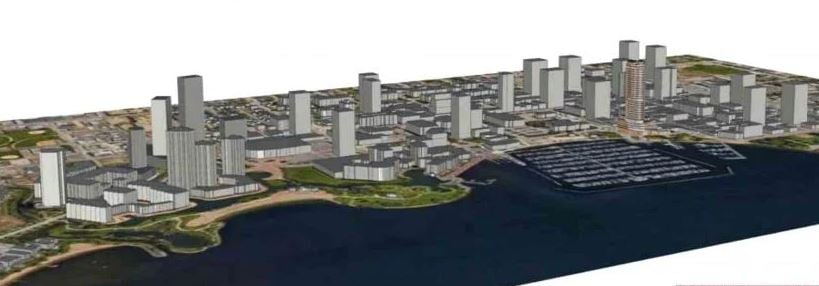Love 'em or hate 'em, highrises are popping up all over Kelowna.
Especially downtown, a skyline of slim condominium towers is rising, giving the city an increasingly urban sophistication.
While Kelowna, population 223,000, has nowhere near the density of Vancouver, with its population of 2.6 million, we can look to the bigger city for dos and don'ts lessons as we grow up, literally and figuratively.
As such, the Okanagan branch of the Urban Development Institute put on a virtual panel discussion Thursday called 'Lessons from Vancouverism for Kelowna.'

Vancouverism is essentially the urban form of the city's downtown consisting of a forest of tall, slim towers for density, with enough low-rise, open space and park separation to maintain air, light and views.
"For sure, I see parallels and differences between Vancouverism and Kelownaism," said panellist Randy Shier, the president of Mission Group.
"Just as density has increased walking, cycling and transit in downtown Vancouver, density in downtown Kelowna is increasing walking, cycling and transit."
Mission Group has already built the 20-storey Ella condo downtown and is at work on the 25-34-and-41-storey condo and 16-storey office building cluster at Bernard Avenue and St. Paul and Bertram streets.

Both cities also have incredible 'livability' with waterfront downtowns full of housing, shops, services, parks and recreation, offices and dining.
However, whereas Vancouver's downtown population is 35% families with children living in highrises, Kelowna's is hardly any.
Downtown Vancouver has elementary schools and daycares to service families, Kelowna's downtown has none.
"The key with highrises is livability," said Shier.
"If more highrises results in a safe, affordable, diverse and amenity-rich community with parks and an elementary school then Kelowna is doing it right."

One of the other panellists was Larry Beasley, an urban consultant and author of the book 'Vancouverism.'
"Vancouver is an example of a city where lots of people want to live downtown because of its livability, sustainability and resiliency," said Beasley.
"It's not all highrises, but livable density in all sorts of neighbourhoods."
Both Vancouver and Kelowna are desirable cities where people are willing to pay a premium to live, work and play.
Both are also hemmed in by water and mountains meaning there's limited land to build on, which also creates demand and drives up prices.
Vancouver did a good job building highrise housing for low-and-high-income earners, which inadvertently left the middle class out.
Kelowna can learn from that and build a wide range of tower, low-rise and townhouse housing for renters, buyers, investors in all income brackets.

Most condo or apartment highrises have retail space at street level to serve people in the neighbourhood.
As online shopping increases for clothes and housewares, such new retail space has to be walkable for residents and include 'experiential' and 'necessity' businesses such as grocery and drug stores, hair salons, dental and medical clinics, restaurants and coffee shops.
















